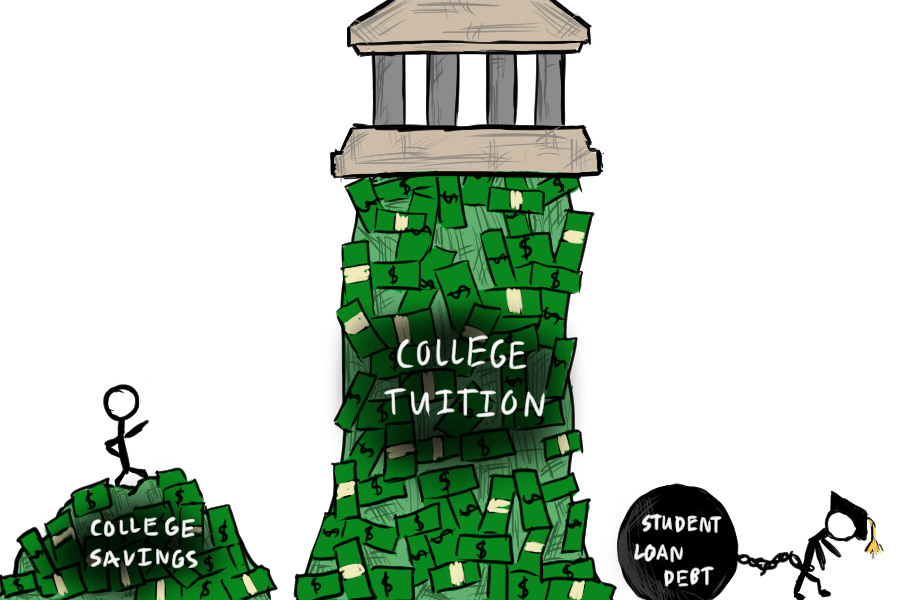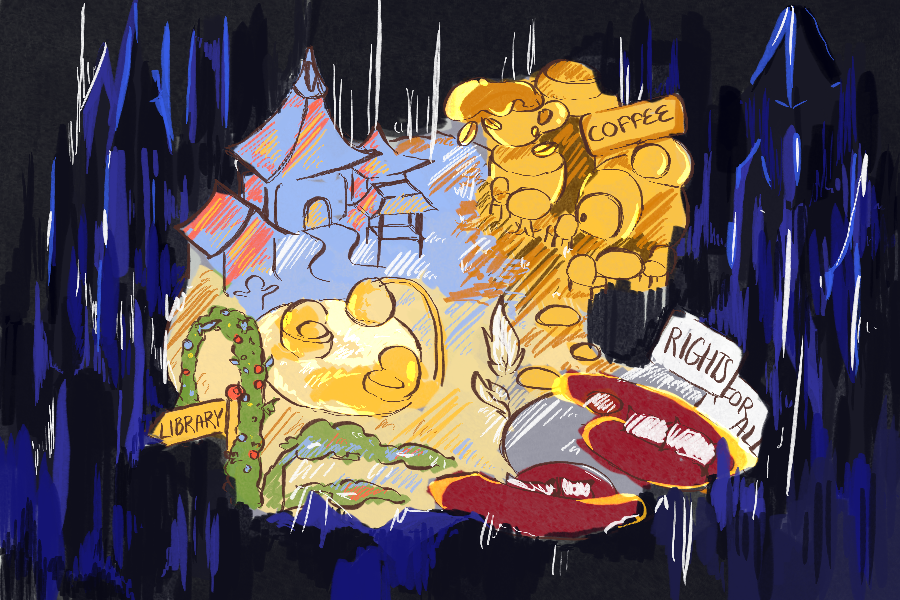Each year, millions of high school seniors across America anxiously await their college application decisions after hours spent editing supplemental essays, earning perfect grades, and praying for an acceptance letter from that one dream school. However, the grim reality of higher education in America results in abandoned dreams and institutional inequities that are widened with the growing costs of tuition.
The Education Data Initiative reports that the average cost of college in the United States as of May 2024 is $38,270 per student per year, amounting to over $500,000 over four years for a bachelor’s degree including excess expenses. The inequity becomes fairly obvious when this steep cost is compared to the average income in the US: $66,621, according to the Social Security Administration. This means that for the average American, one year of college costs more than half of their yearly income; furthermore, adding in the cost of living, taxes, and bills only widens this gap.
Capitalism thrives on competition, which can drive innovation but can also lead to unequal access to resources and opportunities. When it comes to higher education, the pressure to compete has pushed colleges to adopt market-based strategies, prioritizing branding and rankings over educational opportunities. In their attempt to attract more students and boost their prestige, many colleges invest heavily in non-academic amenities, such as state-of-the-art gyms, spacious dormitories, and expansive cafeterias. These investments are designed to appeal to prospective students who see college as a lifestyle experience rather than simply an academic pursuit. Colleges have also become more selective, marketing their application to hundreds of thousands of students, only to select a fraction; this process shrinks their acceptance rates, leading many to think of these schools as a lucrative opportunity. However, the focus on enhancing the campus often leads to increased tuition to cover the high expenses; thus, rather than focusing funds that aid educational opportunities for students, colleges prioritize fancier amenities.
The capitalist emphasis on profit is equally apparent in the student loan industry. With the rising cost of tuition, many students are forced to take out loans to pay the abnormally high fees. Yet, instead of providing relief, the student loan industry often takes advantage of vulnerable students; similarly, operating with a profit-first mindset, federal student loan programs and private lenders leave students struggling financially for years to pay off their debt. Stuck in a cycle of debt, young adults are unable to freely contribute to the economy, furthering economic inequality. The prioritization of profit not only by the colleges themselves but also by lenders is a clear symptom of capitalist values that dictate access to education.
College is often considered a pathway to upward mobility: increased pay, better jobs, and more benefits. However, the more isolated colleges become on their sole goal to maximize profits, the less students feel compelled to attend a university. The National Center for Educational Statistics reports that only 39% of 18 to 24 year-olds enrolled in a four-year college in 2022, as compared to 41% just a decade earlier in 2012.
For an America obsessed with innovation and rationality, higher education seems like an obvious choice; however, this constant obsession with money, profits, and revenue makes it impossible for any college to exist without their sole focus being money. In order to create an intelligent society capable of remarkable innovations, capitalism must come second to education, even if it seems infeasible right now.










































































